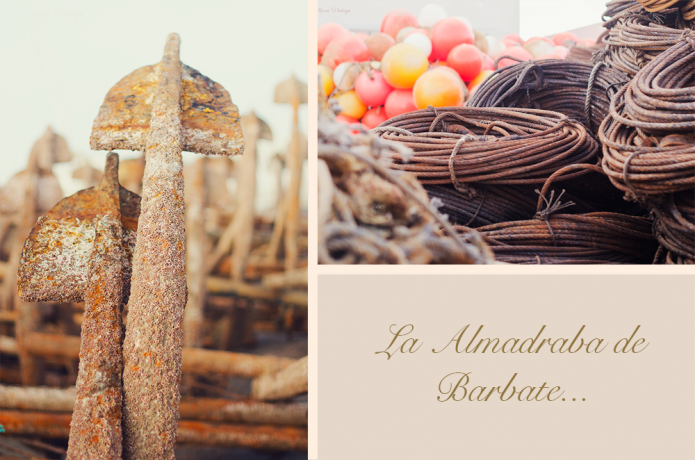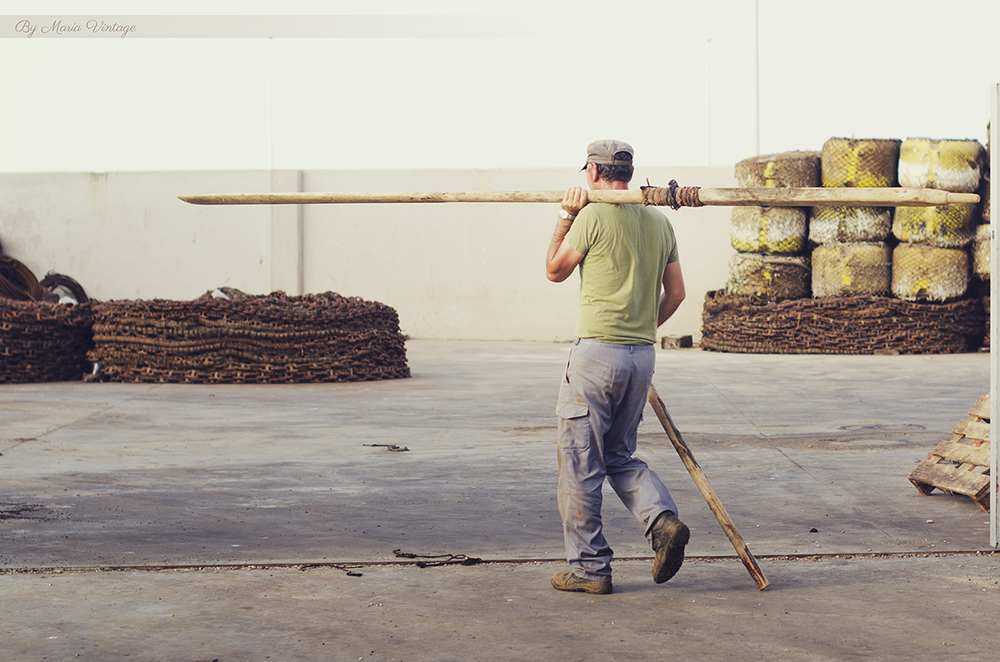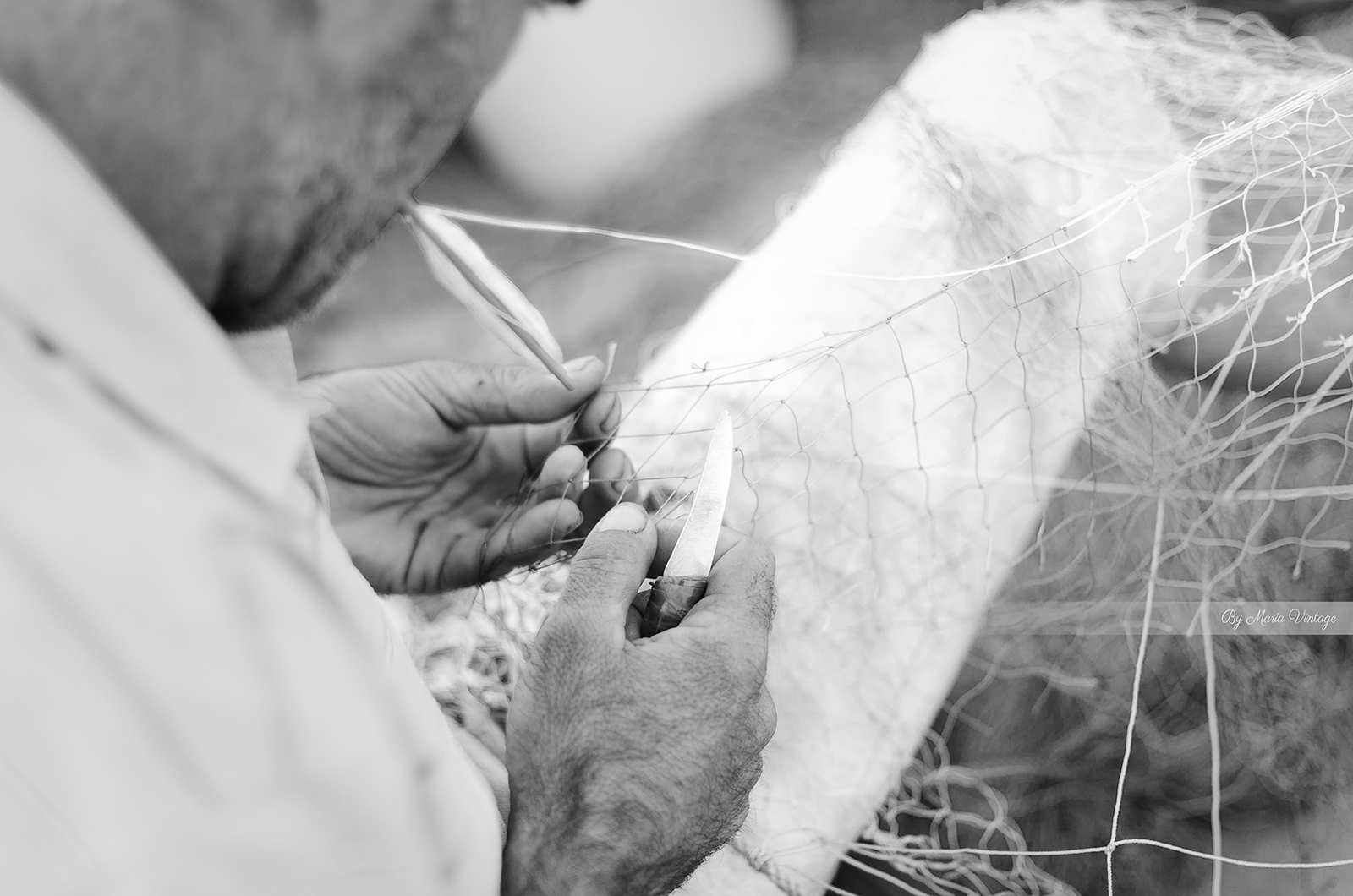One of the things that I wanted to do when I found out that I would be spending a few days in Cadiz, was to get up on day at the break of dawn and go down to the Barbate port to see the arrival of the boats with their fresh fish. Of course I could not leave the camera at home. One morning this August with the typical strong wind of the region blowing intensely, I equipped myself with all the necessary tools and presented myself in the port at 7:30am to live this peculiar moment at first hand.
I was hugely disappointed at the start; just this week the Barbate float happened to be in the sardine fishing grounds of Cadiz, which meant that those of Barbate were empty and without a single boat loaded with fish arriving to dock. It seemed that the day I had chosen wasn’t the best, however, as always when one isn’t expecting anything; you end up getting a pleasant surprise.
And this is how it went, before long I was speaking with one of the people in charge of the port, he was explaining everything that was happening in a small corner of the port that had caught my attention, it was the only corner with any activity. There were ten seamen or so immersed in the only two activities that gave life to the port during those days: loading a boat with tons of fresh herrings for the bait of the 3000 tuna fish that are kept in the fattening and grow-out ponds close to the trap; the dismantling of this, in function since April 20th of this year, will happen next season in 2014.
Everything continued more or less the same as it had done 3000 years ago when the Phoenicians installed themselves in the region, giving start to the capturing of tuna fish that crossed from the Atlantic to spawn in the Mediterranean. The Phoenicians constructed the first factories dedicated to salting the tuna, creating a commercial route from these coasts, to transport the tuna captured and treated in Gadir (current Cadiz), across the entire Mediterranean.
They used amphorae made of mud that formed a two handled peak at the end; these were divided into various compartments on the inside. The base was for the salted fish, and in the higher parts there were different aromatic herbs and perfumes, which managed to eliminate the unpleasant odor during the long journey. The boats, loaded with sand beds in their cellars, sailed with the amphorae stuck over them in order to avoid the boat moving in dangerous seas throughout the duration of their long commercial journey.
The Phoenicians were the driving force behind a tradition and technique that lasted years after the Romans. These were the founders of the current Bolonia beach in the city of “Baelo Claudia”, where the main tuna treating factory of the Mediterranean may be found, still perfectly visible. There the tuna was cut up; they salted it in the great deposits dug out in the grounds, and with the deprivation and viscera of fish in the area, mainly of tuna, it was macerated in direct sunlight during the whole summer. They also created the prized sauce “Garum”, which was a delicacy during the period. This sauce is considered to be an aphrodisiac, and due to its elevated cost, it was only consumed by the wealthier classes of Ancient Rome. In view of the ingredients and treatment, I am sure that now we would not even be able to even smell the costly and renowned sauce.
The Arabs arrived after, to whom we owe the word “almadraba”: place where one beats.
The tradition continues up to the present day as every year the labyrinths of nets are hung up, just the way they were in the past. Through a channel formed by nets anchored to the bottom, it is possible to direct the tunas to a great big net from which they can no longer escape. After lifting this great load, the tunas are pulled up to the surface where they are captured one by one by some extremely strong arms. Not just anyone is capable of lifting pulsing fish, giving violent jerks, and weighing between 300 to 500kgs, and then to throw them onto the surrounding boat decks which are forming a ring that becomes increasingly narrower as long as the precious load is still being extracted from the waters.
In the forties there were more than twenty salting locations in the area where people from all over went to stock up on their famous salted fish. The salt, which is from the Chiclana salt flats and thicker than usual, is perfect for making “Mojama” (dried salted tuna). In those years of misery in Spain the star product was the herring sardine, however, dogfish, white tuna, tuna and flying fish were also salted. There are very few factories left now, although they continue to work in the exact same way as the Phoenicians and Romans did in their day.
I was told all of this in the port, but afterwards they advised me to visit “La Chanca”. It is one of the few craftwork and family-run businesses left in the area, in which a curious and interesting tuna museum has been installed, and where you are explained everything and are able to taste the products. Here we see the tuna get cut up and hear the famous “ronqueo”, the hoarse sound made when the expert hands pass the knife through the dorsal spine to separate the tuna loins. It is a noise similar to that made by a person snoring, and from this, comes the name.
A great variety of products are salted, preserved and smoked in the area, above all tuna fish, and they do it exactly the same way as it was done 3000 years ago. It is an art that should never be lost, and that all of us should know about and value for its long tradition in our history.
I leave you here with a small photographic report of my experiences that morning in August, I hope you like it.
Ronqueo: A hoarse sound, such as a snore.





